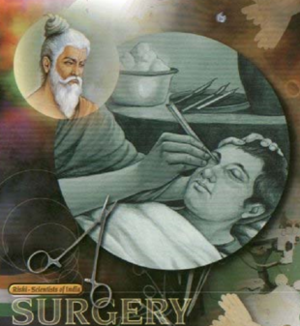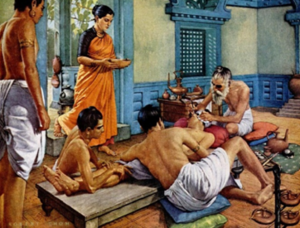Talk:Suśruta, The Ancient Hindu Surgeon
From Hindupedia, the Hindu Encyclopedia
By Vishal Agarwal
Ancient India also had very renowned surgeons. The Atharva Veda, which is one of the four Vedas, describes some methods of surgery on humans and animals. Around 1000 BCE, Divodāsa, the King of Kāśī in northern India, taught his students the various principles of surgery in a systematic manner. His student Suśruta then compiled a book called the Suśruta Saṁhitā that is studied even today.
How advanced the surgical practices in Āyurveda were can be understood from the following facts:
- Several surgical instruments used by Ayurvedic surgeons in ancient India were identical or similar to what modern surgeons use today.
- Suśruta Saṁhitā describes several complex surgeries like eye surgery, delivering a child by C-section, treatment of wounded soldiers, and even amputation of limbs to prevent the spread of disease.
- It also describes the use of anesthetic materials during surgery so that the patient does not feel pain while he is being operated upon.
- Suśruta Saṁhitā also correctly describes how diseases can result from a variety of causes like genetics (inheritance from parents), poor diet and lifestyle, and even due to bad karman of previous lives.
- A report by Europeans written in 1792 CE described how plastic surgery was used by Ancient Vedic physicians to rebuild the nose of a cart-driver whose nose had been cut by soldiers of an enemy state. It was only several decades later that Western surgeons could practice plastic surgery.


